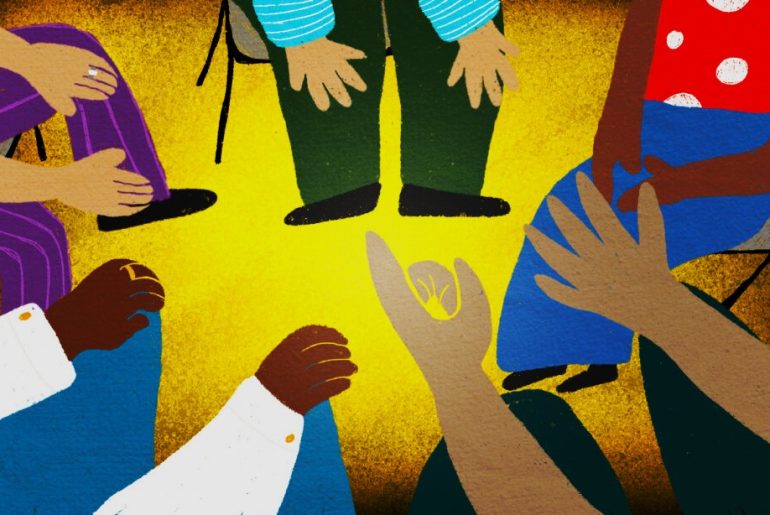A Batterers’ Intervention Program (BIP) is a rehabilitative program designed for individuals convicted of specific domestic violence offenses. While some may enroll voluntarily, it is more common for participants to be mandated by a court order as part of their sentencing. The requirements to complete a BIP vary across states, but all programs share a focus on education and rehabilitation aimed at preventing future incidents of domestic violence.
A batterer’s intervention program?
A batterer’s intervention program (BIP) is an educational and rehabilitative course designed for individuals accused or convicted of domestic violence. Typically, these programs are mandated as part of the sentencing in a domestic violence case or are incorporated into pretrial diversion programs.
The structure and content of BIPs vary by state, with specific topics required to be covered and a minimum number of hours that the program must last. States also have a certification process for these courses to ensure they meet required standards; only certified BIPs can fulfill court orders.
For instance, in California, a BIP consists of 52 classes focused on domestic violence, with participants meeting weekly for two hours over the course of a year. In contrast, Massachusetts refers to its program as the Intimate Partner Abuse Education Program (IPAEP), which entails 80 hours of classes with weekly two-hour sessions.
Providers of batterer’s intervention programs, which often include non-profit organizations, must adhere to state requirements and undergo regular monitoring to maintain certification. Participants typically bear the cost of the program fees, although financial assistance may be available for those unable to afford these costs on their own.
How does it work?
A batterer’s intervention program (BIP) functions primarily as an educational program, integrating counseling services that often include group therapy sessions. Many BIPs adopt the principles of the Duluth Model, which is specifically designed to address domestic violence.
In California, for example, batterer’s programs are required by law to:
- Conduct an initial intake to identify and define various forms of abuse, including emotional, sexual, and economic abuse, and provide techniques to stop them.
- Assess the suitability of the program for the defendant, refusing enrollment if the program is deemed unsuitable.
- Require a court or probation department referral specifying the minimum number of sessions before enrollment.
- Implement a sliding fee scale based on the defendant’s financial capability.
- Offer strategies to hold defendants accountable for their violent behavior in relationships.
- Mandate sober attendance in ongoing group sessions.
- Obtain a written agreement from the defendant acknowledging the terms of participation and consenting to removal if unbeneficial or disruptive.
- Require confidentiality agreements from defendants to protect the privacy of other participants.
- Notify victims about available resources and the requirements for the defendant’s program participation.
- Provide educational programs addressing gender roles, violence, power dynamics, the impact of abuse on children and others, and cultural and ethnic sensitivity.
- Exclude couple or family counseling from the program.
- Ensure staff are knowledgeable about family violence dynamics, criminal law, the legal system, and various forms of abuse including spousal, child, sex, and substance dependency.
- Encourage collaboration with local domestic violence centers.
- Regularly update the probation department on the defendant’s enrollment, progress, payment history, program compliance, and final evaluation.
The program content typically includes lectures, classes, group discussions, and both individual and group counseling sessions, focusing on:
- Understanding the causes of domestic violence,
- Recognizing the effects of physical abuse on victims,
- Developing strategies for promoting nonviolence, anger management, and ensuring the safety of potential victims,
- Facilitating behavioral changes to prevent future domestic violence incidents.
The ultimate goal of these programs is to prevent domestic violence. Participants in California are allowed up to three absences, each requiring justification.
Upon successful completion, participants receive a certificate of completion.
The Duluth Model, integral to many BIPs, emphasizes a coordinated community response to domestic violence, prioritizing victim safety and holding abusers accountable without blaming the victim. Originating in Duluth, Minnesota during the 1980s, this model is grounded in the notion that domestic violence is a form of control, focusing on the reeducation of abusers about their impact on others and providing strategies for anger management and addressing mental health issues.

What happens if I fail the program?
If you fail to successfully complete a batterer’s intervention program (BIP), the consequences depend on whether the program was a condition of your probation or part of a pretrial diversion.
For Probation:
- Probation Violation: Failure to complete a BIP as part of probation is considered a violation. This could lead to imprisonment for the remainder of your sentence.
- Terms of Probation: Common conditions of probation may include avoiding criminal activity, regularly reporting to a probation officer or court, paying victim restitution, and performing community service. Specifically for domestic violence offenses, completion of a BIP is often mandatory; in states like California, it’s a required condition with a minimum probation period of three years, regardless of whether the offense was a misdemeanor or a felony.
- Probation Violation Hearing: If you violate probation by not completing the BIP, a probation officer can arrest you, and a hearing will be scheduled. At this hearing, evidence of your failure to meet BIP obligations will be presented. You can defend yourself by arguing that there was no violation, the violation was justified, or it was minor and should not result in severe punishment.
- Possible Outcomes: The judge may decide to revoke your probation and incarcerate you for the remainder of your sentence, modify your probation with stricter conditions, or reinstate your probation under the existing terms.
For Pretrial Diversion:
- Resumption of Criminal Case: If BIP is part of a pretrial diversion, failing the program means your criminal case is reactivated.
- Case Outcomes Based on Plea: The subsequent steps depend on whether you pleaded guilty to qualify for the diversion. If so, the case moves directly to sentencing, and you cannot present new exculpatory evidence as you have already admitted guilt. If you did not plead guilty, the case returns to criminal court where you can contest the charges, and the prosecutor must prove your guilt.
Is a defendant’s participation in a program confidential?
Generally, a defendant’s participation in a batterer’s intervention program (BIP) is not kept confidential in terms of their behavior and progress within the program. Many states mandate that BIPs report to the court and probation departments regarding a defendant’s attendance, participation quality, and any disciplinary issues. This includes reporting any disruptive behavior or missed sessions.
However, while the defendant’s conduct in the program is subject to reporting, confidentiality regarding the identities and details of other participants in the BIP is maintained. Defendants are typically required to sign a confidentiality agreement that obligates them not to disclose any information about other participants, protecting the privacy and safety of everyone involved in the program.
What is a crime of domestic violence?
A crime of domestic violence typically involves a violent act committed against an intimate partner, though it can extend to other potentially violent offenses against family members or those closely associated.
The primary violent offenses classified under domestic violence usually include:
- Assault,
- Battery,
- Sexual assault or sexual abuse.
Additionally, certain states may also classify the following as domestic violence under specific circumstances:
- Child endangerment,
- Criminal threats,
- Stalking.
These offenses are considered crimes of domestic violence when the victim is an intimate partner, which can be defined differently across various jurisdictions. Some states may use terms like “family or household member” but often encompass the same group of individuals. For example, under California law, this includes:
- Current and former spouses,
- Current and former domestic partners,
- Current and former fiancés,
- Current and former cohabitants or live-in romantic partners,
- The other parent of the person’s child,
- Individuals seriously dating or who have had a dating relationship.
When these offenses are classified as domestic violence or intimate partner violence, they typically carry more severe penalties than the same crimes committed outside of such relationships. Consequences may include restraining orders, loss of gun rights, and increased jail time, reflecting the serious nature of these violations within personal relationships.
